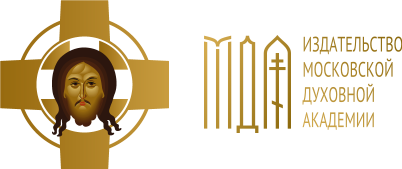The Greek Church and the Papacy in Italy in the Middle Ages and Modern Times
DOI:
https://doi.org/10.31802/CH.2022.9.3.001Keywords:
Calabria, Sicily, Greek Church, Latin Church, Rome, Venice, Council of TrentAbstract
Historically, the Greek Church or, more broadly, the Byzantine church tradition for Italy is not just something alien, but, on the contrary, an integral part of its spiritual culture. The term «Greater Greece», as Southern Italy was called back in antiquity, explains the attraction of the region to the Greek-speaking cultural and spiritual world, especially since entire regions of the peninsula were part of the Byzantine Empire for significant periods of time, and, if in a number of cases, as in In Puglia or Lucania, ecclesiastical authority remained with the pope, then, for example, in Calabria and Sicily, from the time of the iconoclast emperors, it belonged to the Patriarchs of Constantinople. Northeastern Italy, for its part, politically and culturally gravitated towards Byzantium for its own reasons — since the invasion of the Lombards (VI century), the population of the former Roman province of Venice sought intercession from the emperors of the Eastern Roman Empire. In this communication, we are primarily interested in the nature of the relationship of the Latin Church, or better to say the papacy, as a political and administrative institution, with the Greek Church in Italy. Based on the analysis of sources and research on this topic, a conclusion is made about the dual nature of the Eastern Christian tradition in the Apennines. If in Southern Italy the Greek and Albanian communities were from the first millennium under the jurisdiction of Rome and, thus, remaining under it after the division of the Churches, were for the most part assimilated and cut off from their Byzantine roots, then the nature of the emigration of the Greeks to the north of the peninsula was different. The Orthodox within the Venetian Republic managed to preserve their own identity, as well as to do a lot in the field of apologetics and other branches of theology and science. The climate of religious tolerance and the powerful educational and scientific base of Venice and Padua made it possible to educate generations of educated people who would later become the cultural elite of free Greece.
Downloads
References
Ясіновський А. Митрополит Філадельфійський Гавриїл Севір: життя і літературна творчість // Наукові записки УКУ. 2010. Ч. 2: Історія. Вип. 1. C. 11–34.
Ястребов А. О. Русско-венецианские дипломатические и церковные связи в эпоху Петра Великого: Россия и греческая община Венеции. Москва: Познание, 2018.
Βελούδης Ι. Ελλήνων ορθοδόξων αποικία εν Βενετία, 2 έκδωση, Βενετία: τυπογραφείον Φοίνιξ, 1893.
Θεοδώρου Ευ. Ελληνοїταλικοί σχέσεις και επαφαί επί λειτουργικών ζητημάτων περί τον Θ’ αιώνα // La Chiesa greca in Italia dell'VIII al XVI secolo: atti del Convegno storico interecclesiale (Bari, 30 apr.- 4 magg. 1969). Padova: Editrice Atenore, 1972–73. 258. P. 257–268.
Kαλογήρου Ἰ. Ἡ ἐγκαθίδρυσις ἑλλήνος ἀρχιεπισκόπου εἰς Βενετίαν κατὰ τὰ τέλη τοῦ ΙΣΤ' αἰώνος // La Chiesa greca in Italia dell'VIII al XVI secolo: atti del convegno storico interecclesiale (Bari 30 aprile — 4 maggio 1969). Padova: Antenore, 1972. P. 89–131.
Τατάκης Β. Γεράσιμος Βλάχος ο Κρής (1605|7–1685), φιλόσοφος, θεολόγος, φιλόλογος. Βενετία: Ελληνικό Ινστιτούτο Βυζαντινών και Μεταβυζαντινών Σπουδών Βενετίας, 1973.
Borsari S. La politica bizantina di Carlo I d’Angiò dal 1266 al 1271 // Archivio storico per le provincie napoletane. № 74 (1955). P. 319–350.
Cotroneo R. Il rito greco in Calabria. Reggio Calabria, 1902.
Croce I. Italo-Albanesi // Bollettino della Badia greca di Grottaferrata. № 20 (1966). P. 37–50.
D’Antiga R. Il Kalendarium Venetum XI saeculi. Influssi bizantini sulla religiosità veneziana // Thesaurismata. № 43 (2013). P. 9–58.
D’Antiga R. Origini del monachesimo al Monte Athos e la prima presenza benedettina // Benedictina. Rivista del centro storico benedettino italiano. Anno 67. № 1. 2020. P. 3–23.
Fedalto G. Chiesa e religiosità ortodossa nelle Isole Ionie: Eugenio Vulgaris e Angelo Maria Querini // Geografie confessionali. Cattolici e ortodossi nel crepuscolo della Repubblica di Venezia (1718–1797) / A cura di G. Gullino, E. Ivetic. Milano, 2009. P. 147–158.
Fedalto G. Richerche storiche sulla posizione giuridica ed ecclesiastica dei greci a Venezia nei secoli XV e XVI, Firenze: Leo S. Olschki, 1967.
Frajese V. La via greca allo stato moderno. Gavril Seviros e la politica delle minoranze negli anni di Paolo Sarpi. // Gavriil Seviros, arcivescovo di Filadelfia a Venezia, e la sua epoca, atti della Giornata di studio dedicata alla memoria di Manussos Manussacas (Venezia, 26 settembre 2003) / Apostolopulos, D. G. (ed.). Venezia, 2004. P. 145–158.
Grumel V. L’annexion del l’Illyricum oriental, de la Sicile et de la Calabrie au Patriarcat de Costantinople, in Recherches des sciences réligeuses. № 40 (1952). P. 191–200.
Herde P. Il papato e la chiesa greca nell’Italia meridionale dall’XI al XIII secolo // La Chiesa greca in Italia dell'VIII al XVI secolo: atti del Convegno storico interecclesiale (Bari, 30 apr. — 4 magg. 1969). Padova: Editrice Atenore, 1972–73. P. 213–255.
Maccarone M. La ricerca dell’unione con la chiesa greca sotto Innocenzo III // Unitas. № 19 (1964). P. 251–267.
Manoussacas M. La comunità greca di Venezia e gli arcivescovi di Filadelfia // La Chiesa greca in Italia dell'VIII al XVI secolo: atti del convegno storico interecclesiale (Bari 30 aprile — 4 maggio 1969). Padova: Antenore, 1972. P. 45–87.
Peri V. Chiesa Latina e Chiesa greca nell’Italia postridentina (1564–1596) // La Chiesa greca in Italia dell'VIII al XVI secolo: atti del Convegno storico interecclesiale (Bari, 30 apr. — 4 magg. 1969). Padova: Editrice Atenore, 1972–73. P. 271–469.
Peri V. Due date, un’unica Pasqua. Le origini della moderna disparità liturgica in
una trattativa ecumenica tra Roma e Costantinopoli (1582–84). Milano, 1967.
Peri V. La congregazione dei Greci (1573) e i suoi primi documenti // Studia Gratiana. № 13 (1967). P. 129–256.
Sansterre, Jean-Marie. Les moines grecs et orientaux à Rome aux époques byzantine et carolingienne (milieu du VIe s. - fin du IXe s.) Louvain: Université de Bruxelles, 1983.
Downloads
Published
How to Cite
Issue
Section
Categories
License

This work is licensed under a Creative Commons Attribution-ShareAlike 4.0 International License.







